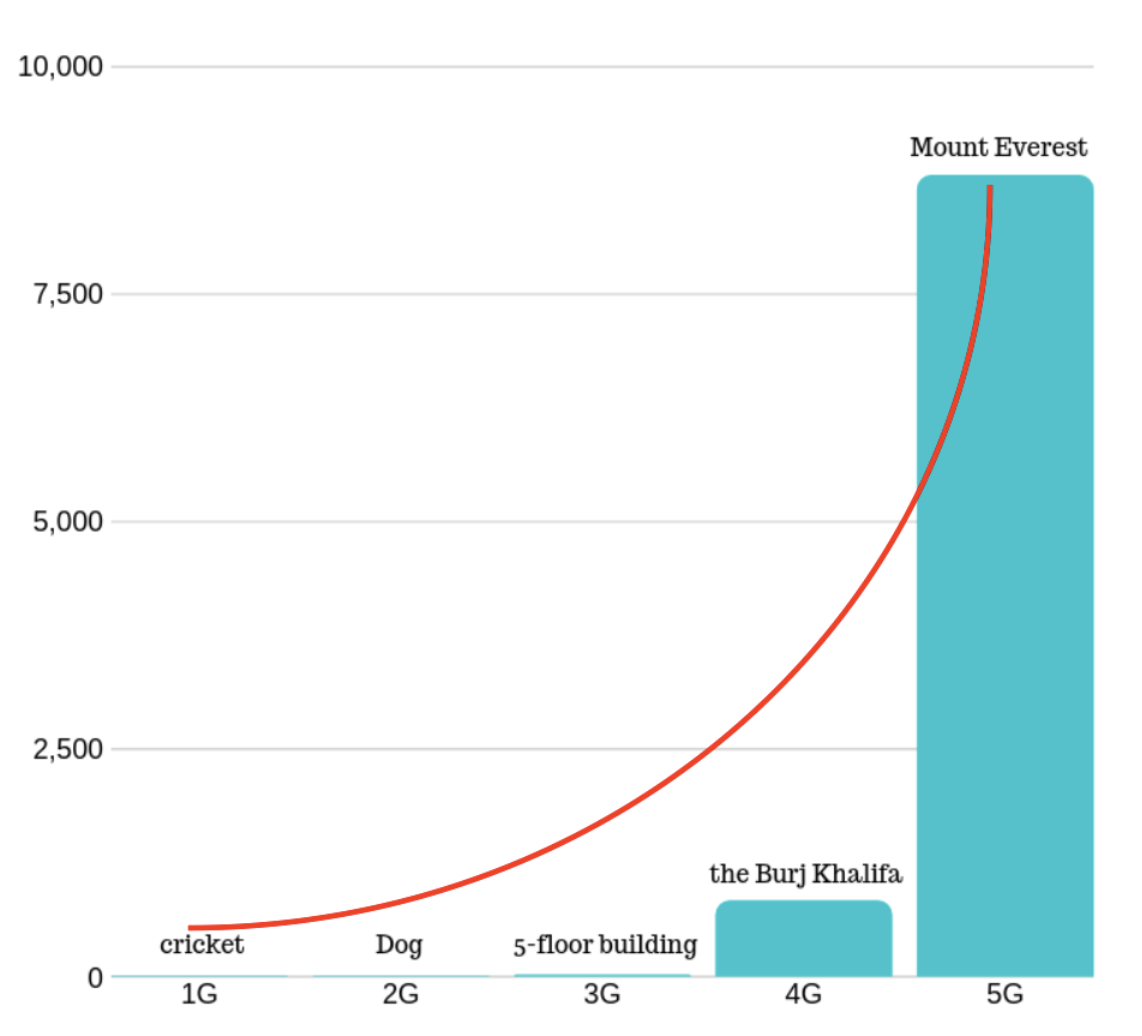The Mobile Industry's Future with 5G
The new 5G network is said to be the next big thing. But what does that really mean for us modern day, internet-reliant users?
THE EVOLUTION and HISTORY OF G
Let’s start with the letter ‘G’. It actually means generation making the ‘so-called’ 5G Network the 5th Generation Network Technology.
Did you know there was a 0G era? During this era, mobile phones were quietly being developed for years. Mobile phones were originally intended for military purposes, in order to transmit military information between two military sites. The technology was very rudimentary at that time period and voice signals were transmitted by AM (Amplitude Modulation) and FM (Frequency Modulation).
By the 1940s, some companies, like Motorola and Bell Telephone Company tried to commercialize mobile phones. However, the so-called mobile phones were not that “mobile” at the time. It wasn’t as easy to carry a mobile phone as it is now, but people were able to put it in the car or a suitcase.
Thirty years later, 1G made its debut. In some classic Hong Kong movies, every gang-leader had a mobile phone on them. Mobile phones were expensive and rare at the time making them a symbol of identity. One of the most iconic products of the time was the Motorola DynaTAC. The sound quality and battery life were poor, but gang members found these clunky, heavy phones to have a dual purpose as a weapon in gang fights.

In 1999, 2G made the switch from analog signals to digital signals to improve the sound quality and information transmission security. With 2G, we unlocked global roaming and the method of messaging.
Before we get to 3G, there were actually two more networks in between – 2.5G and 2.75G.
2.75G was also called EDGE. With EDGE, people were able to send and receive emails, browse simple web pages, chat through AOL/Yahoo!/MSN and send MMS without any issues. Shockingly enough, EDGE is still in play today. When your phone doesn’t have a strong signal, you’ll notice that the 4G sign on your phone disappears, replaced by an E sign, which is the 2G EDGE network.
With the advancements of 2.75G, 3G technology brought us the entire mobile internet. We had mobile access to, what felt like, everything from world wide news to booking flights to instant messaging our family and friends.
Smartphone industries and mobile internet industries started to rise in this era. Because of this era, we now have phone apps (and companies like us!). The stability of mobile internet increased so you literally could be on the move and still have internet. With 2G, even running would cut out the internet.
After all of these iterations, modifications and improvements, we have come to the beginning of where we are now, 4G Network. We can live stream videos to binge watch our favorite Netflix show, order a ride through Uber or Lyft or get lunch delivered to our doorstep with PostMates. 4G was designed and built with a core to have data transmission through internet. It originally was not much faster than 3.75G but the later iterations of 4.5G and 4.9G LTE have drastically improved it.
With the 4G technology, the latency went from a few hundred milliseconds to a few tens of milliseconds, usually can be 20-30 ms. So, in the 4G era, the game industry, especially mobile game industry, had achieved unprecedented development, with unprecedented games like FortNite, the arena of valor and so on.
The only real requirement is that the network speed needs to be fast. If the network speed is not fast enough then that the movie you’re watching would not be able to be cached leading to being stuck in the process of watching.
SO WHERE IS 5G GOING TO TAKE US?
SPEED
Starting with the obvious, 5G is incredibly fast. In fact, it’s 10 times faster than the 4G network. If we were to compare the numbers in terms of the height of buildings, here’s what we’d see:
Under the 1G network, the efficiency of data transmission is about the height of a cricket. Then under the 2G network, the internet speed is about the height of a dog. And under 3G network, the transmission speed would be about the height of a five-story building. Then come to 4G, the speed is about the height of the Burj Khalifa — the highest building in the world, around 830m high. Furthermore, when it comes to 5G, the internet speed would be about the height of Mount Everest. So we can see how fast is the progress of mobile technology.
AM (Amplitude Modulation) and FM (Frequency Modulation)

DELAYS
5G further reduced the delay to around one millisecond. Yes, only by one millisecond. Although it may be easy to ignore this improvement, here’s why it’s important. Of course, streaming and the gaming experience will be even better. But where the real value lies is in telemedicine and industrial control.
In the near future, we will see self driving cars. The devices connected to these cars will now be 5G allowing them to operate at a very low power consumption. But also think about how much safer a self driving car would be if it could detect a situation a few milliseconds earlier.
SIZE
Not only is 5G better, it’s bigger. It’s been designed for the IOT (Internet of Things) so it can support more than one trillion devices to access 5G network simultaneously. This alone brings new possibilities. Everyday items like our water meters, gas meters and electric meters could connect to the internet. Why? Because it would save power companies time and money from sending out their employees to drive to these homes to get the data.
This is an option today with 4G, but it would cost the power companies more than sending their employees out to get the data. With 5G, it would be affordable and the power consumption would be low enough to maintain it. For the everyday consumer, us, this could mean lower utility bills.
NETWORK SLICING
5G is enhancing Network Slicing. With network slicing technology, 5G can customize the network of devices according to the different needs of each device. Using an example mentioned earlier, gamers care most about the delays and streamers care more about speed. The 5G network would now assign high speed, with higher delays to video streamers and lower speed, with lower delays to gamers.
But those water meters we were talking about earlier would be assigned low speed and high delay. This would be a sliver, close to 0, of the internet being used.
So 5G would provide different devices and meet different needs through different supply, which would improve the quality and efficiency of the network.
THE POSSIBILITIES
In short, 5G is going to change the way we surf the web and create technology. We can look forward to an increase in speed, reduced delays, and a smarter network divide.
We at MEDL are excited for these improvements and see a great potential in the healthcare industry. In healthcare, every second counts. With reduced delays and faster speed, we can expect improvements with healthcare technology.
If you’re interested in more information, check out this podcast on Spotify.
If you are curious about the possible health concerns of 5G, you can read more about it here Experts Weigh in on 5G Health Concerns

Experts Weigh in on 5G Health Concerns
MEDL Mobile ranked One of Best UX and App Developers in LA

